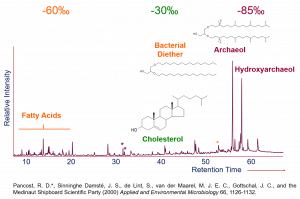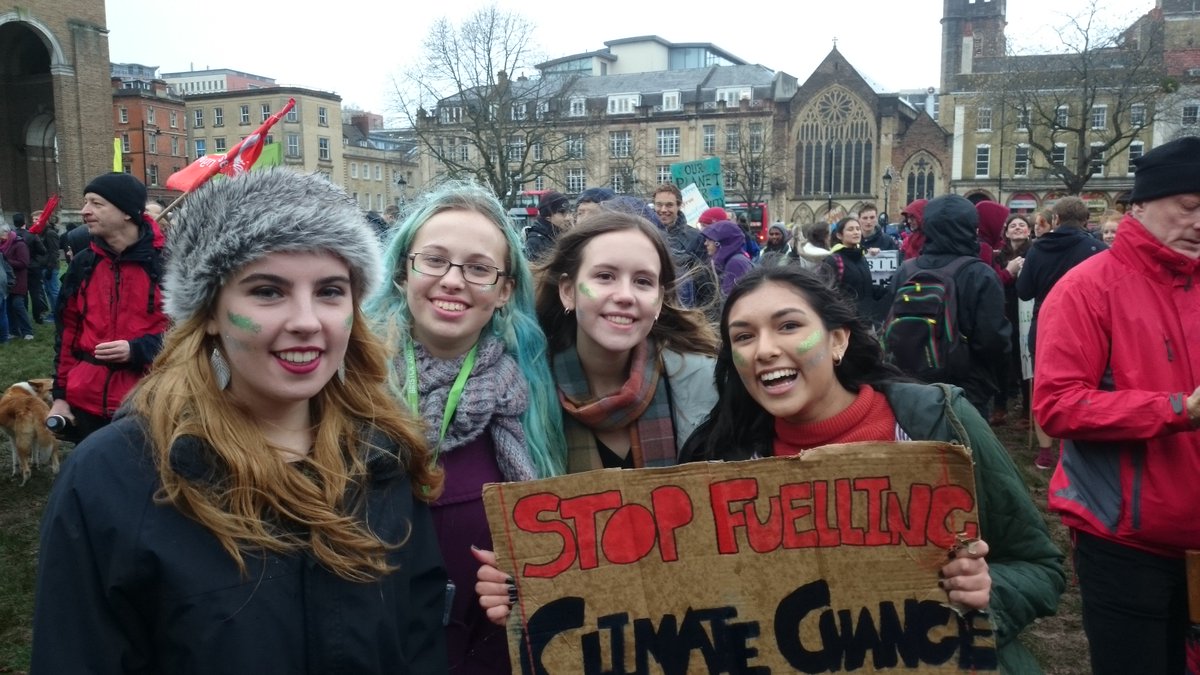I grew up in Ohio, far from the Ocean; and growing up on a dairy farm left no opportunity for vacations to visit it either. We had the muddy freshness and summer warmth of lakes and reservoirs, ponds and rivers, but no salty air, no sense of unfathomable expanse and depth. But one of the joys of geology is that your lab is global, and my work has taken me across the Ocean and into its depths and deep into its history. It has taken me to the ancient shallow carbonate platform seas of the Ordovician teeming with crinoids, brachipods and exotic microbial mats, the continent-bisecting Western Interior Seaway of the Cretaceous, and sediment-choked marginal seas of Cenozoic Tanazania. And to understand these ancient seas, my work has taken me across those of the world today.
My first research expedition was in 1999, during my postdoctoral fellowship at the Netherlands Institute of Sea Research. One day, my supervisor Jaap came into the office and asked me if I’d be interested in participating in a research expedition in the Mediterranean Sea, accompanied by submersible dives to the seafloor. I nearly knocked over my chair jumping up to say yes, before recovering my ‘cool’ an hour later to find him and soberly and professionally ask what important scientific questions we were going to address.
The Medinaut expedition was a joint Dutch-French expedition on the L’Atalante to explore mud volcanoes, methane cycling, microbial cold seeps and their associated ecoystems in the Mediterranean Sea.
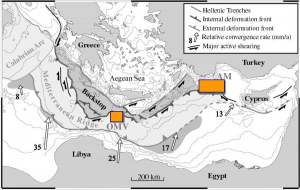
Led by great colleagues, including John Woodside, Catherine Pierre and Gert de Lange and including lifelong friends such as Vanni Aloisi, we explored stress and fracture zones that allow ancient, fluid-drenched sediments to burst onto the seafloor as 1 to 2 km wide cones of ancient mud. These are beautiful places, especially where the fluids are saturated with Messinian-infused salt brines, resulting in ultra-saline rivers, ponds and lakes sitting serene and toxic on the Mediterranean seafloor.
What was of greatest interest to myself and a few colleagues was the biogeochemistry fuelled by these escaping fluids. In particular, methane bubbled or seeped from the seafloor, and methane is as magnificent a fuel for microorganisms life as it is for heating your home – the reaction of oxygen with methane produces a great amount of energy (what we chemically refer to as redox energy). However, in the preceding years, evidence had hinted that methane in the seafloor was oxidised to carbon dioxide long before it reached the oxygen near the seafloor and instead was oxidised at greater depths by sulfate. Sulfate is very abundant in seawater, one of six major ions alongside sodium and chlorine, contributing to its saltiness; but compared to oxygen it is a poor oxidant of methane and yields far less energy. In fact, despite hints to the otherwise, it was debated whether the reaction – termed anaerobic oxidation of methane (AOM) due to the lack of oxygen – could even support life.
(A compilation of images from the MediNaut expedition, best viewed in Internet Explorer)
Our mission was to explore which reactions were dominant and which microorganisms mediated them and exploited them for energy.
The rubbery black mats formed by these organisms are spread across the seafloor of the Napoli mud volcano; you can see them in the video above and the image below, where they sit at the top of seeps, at the sources of the thin brine streams running down the flanks of Napoli. It was exhilarating when we first recovered one of these mats, a challenge due to the soft, fluid-soaked sediment that resisted core recovery, and I remember working tirelessly at the lab bench to carefully partition our first small, thin piece of mat and the underlying sediment. It reeked of hydrogen sulfide, the product of sulfate reduction and the putative AOM reaction: hydrogen sulfide is normally the disgusting smell of rotting eggs but in this case it was the exciting smell of discovery, evidence that we had uncovered a mat of these mysterious organisms.
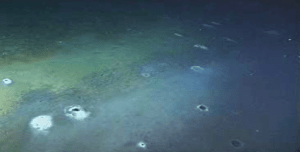
Allow me to digress. Research expeditions are fraught with tales of adventure and misadventure; the sequel to Medinaut – MediNeth on the R/V Logachev – certainly was, with Libyan helicopters, broken winches, a twice-becalmed ship, and a bit of boredom, vodka and poor nutrition-fueled madness. There are fewer tales from Medinaut. However, L’Atalante had its own perils. The canteen, unfortunately, was at the prow of the ship which of course experiences the greatest pitch on stormy seas. After sampling those first mats – bent over, with no horizon in site, the fumes of hydrogen sulfide in my nostrils – we were called to dinner. After five minutes it hit me. It gave me 30 seconds. I stood up; stepped onto the table as I had been pressed along the bench against the ship wall; walked across the table, across my colleagues’ meals, not saying a word; strode into the nearest WC, purposely, without undue haste; and proceeded to ‘decorate’ every cm of that WC. I was sea sick for the rest of the trip, my only reprieve coming on my own submersible dive as the yellow submarine Nautile, slipped into the twilight zone, below the swish and turn of the waves. I could not eat strong French cheese for at least five years after.
And aside from an amusing anecdote, that is a story of chemistry. Because that foul stench of hydrogen sulfide is also the food and fuel of vast seafloor ecosystems. You can see the scattered black mats of the AOM microorganisms in the video but equally widespread are fluffy white filamentous strands of sulfide-oxidising bacteria. They also thrive on chemical energy, the energy from chemical systems out of balance and striving to reach a new equilibrium in an oxygen-rich ocean. And that chemical energy, alongside that of AOM and converted into organic compounds, is the basis for entire deep seafloor ecosystems. The otherwise barren Mediterranean seafloor thrives with life – tubeworms sprout and grow, mollusks sprinkle the seafloor, and fish and crabs swim and skittle amongst them. Here, however, the episodic nature of this chemical fuel means that we find not only isolated colonies of organisms but also their graveyards, from feast to famine as dictated by these ephemeral streams.
Sights and smells, while visceral and providing pointed clues, are insufficient to resolve the questions with which we embarked. Those were resolved in the lab, by genetic profiling of the mats and mapping of methane isotope signatures into diagnostic lipid biomarkers. We found in these sediments surprisingly high concentrations of archaeal lipids – surprising because 20 years ago Archaea were predominantly known for their role in methanogenesis, producing rather than consuming methane. However, methane has a unique isotopic composition having relatively more of the dominant 12C (carbon with 6 neutrons and 6 protons and comprising about 99% of all carbon on Earth) than 13C. And we were able to trace that specific isotope signature into these archaeal lipids, confirming their ecology as methane-utilising organisms.
But also into bacterial lipids. And so our work revealed that it was not a single microorganism mediating this reaction but rather syntrophic organisms acting in tandem. This explained why it had been so difficult to culture them, but it also created a new enigma because this syntrophy required that the sparse energy yield of the AOM reaction be divided even further.
Of course, we were not the only ones investigating this – in fact, we were pipped to the first publication – and certainly not the last. Kai-Uwe Hinrichs first discovered these novel Archaea and Marcus Elvert, Volker Thiel and others were simultaneously discovering other lipid signatures. Many many others, including Antje Boetius and Vicky Orphan, drove the work forward, using increasingly innovative methods and always at the cutting edge of the environmental genomic revolution that continues to this day.
But perhaps one of my favorite follow on findings was that of my colleague Vanni, who was on the expedition as a PhD student, studying the massive calcium carbonate crusts that had also formed on the Mediterranean seafloor. Their presence at methane seeps had been an enigma. The oxidation of methane forms carbon dioxide, which is an acid in seawater and dissolves calcium carbonate – analogous to the ocean acidification problem caused by fossil fuel burning. However, Vanni, colleagues and I showed that the carbonate crusts of the Mediterranean mud volcanoes were packed with biomarkers for methane-oxidising organisms. But not the old oxygen-utilising organisms; the new anaerobic ones. And these organisms do not form carbon dioxide but bicarbonate, not the acid but the base, not something that dissolves calcium carbonate but precipitates it.
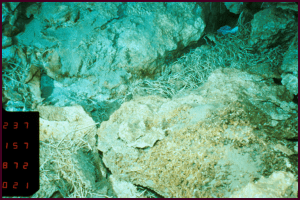
And that is a marvelous example of a negative feedback in the Earth system. As our oceans warm and methane hydrates dissolve and methane begins to seep from the seafloor in other parts of the world, there are organisms that can adapt, colonise, thrive and consume that methane. Not only with oxygen but with sulfate. And not only converting methane to carbon dioxide, but locking that carbon back up as thick carbonate crusts. These organisms grow slowly, and there is no guarantee that they prevent the release of methane due to global warming. But it is a useful reminder that the Earth system contains not just positive feedbacks of thawing permafrost and melting ice but also negative feedbacks that on long enough timescales help keep our planet’s climate in balance.
And that is probably the main lesson of marine-based research. The sense of balance, of slowness and adaptation. That life thrives on a balanced Earth. And it helps preserve that balance, such that when the balance is disrupted, some organisms can thrive – like the ecosystems that thrive in the chemical imbalance of reduced chemical species injected into an oxidising ocean. And yet that balance is fragile; just as entire ecosystems thrive on that chemical energy, they perish when the source of energy is removed; just as microorganisms can act as sinks to methane emissions caused by global warming, they could grow too slowly for that sink to be effective.
Humanity, in contrast, is fast and urgent, and within a geological blink we have transformed our planet. Perhaps we need to rediscover the pace and balance of the ocean. Its slowness and persistence. Its peace and equilibrium. Perhaps we need to slow down to once again experience the feelings the ocean inspires in us as we watch waves crash on the beach, or float upon its surface or dive into its depths.
